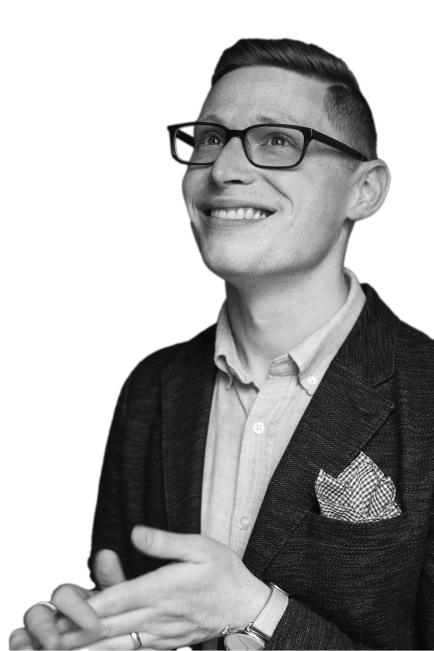Press
Aiming for center mass: Singing into the message with Resonance Ensemble
publication
Daryl Browne
fulltext
Resonance Ensemble had a retrospective/CD-launching concert a few weeks ago. LISTEN, the first CD produced by this Portland choir, is a selection of works they have sung and commissioned and championed in their past 15 years. This concert was a representation of those same past works. And their 2023-24 season-ending concert next June 4, “MISSION 15” will also reflect their successful past performances.
Had enough of the “past?” Good. You’ll not read the word again here, for Resonance is the antithesis of, um, that word. They are an arts organization who continue to explore a pathway to the future and invited other artists – visual, literary and musical – and you to join them on the journey.
In this opening concert Resonance reasserted that the classic choral arts as a genre and we as listeners can embrace a broader, more inclusive, more purposeful present. This concert, and their new CD, highlights choral music creators who know how to mold voices into the exquisite sonic vibrations we call choral music. These creators are well served in the capable voices of Resonance musicians and the conducting of Katherine FitzGibbon.
The Resonance trademark musical excellence was in evidence. Most of these works – contemporary works that challenge the listener but don’t thumb their noses at the value of accessibility – are goldurned difficult. These singers love it and always lean into the challenge which means we get a nice couple hours of choral music.
I must begin with the magna cum laude on that Sunday afternoon: the altos. The blend, the continuity of timbre, the richness with no constriction caused by “making” that sound happen – masterful. I’d like a quart of that to go, please. Unison phrases were breathtakingly perfect; tuning from the steady lowest tones allowed chords above to just pop into place. And we were gifted with three SSAA works balanced upon that steady foundation.
This foundation is essential in Stacey Philipps exquisitely taut harmonic fabric in Witch Trial. The text is from trial testimony in the Salem Witch Trials of the late sixteen hundreds. The voices of the accused – here crisply and passionately expressed – often rise from and return to unison after threading slowly, almost painfully, through exquisitely prolonged whole- and half-step dissonance. The brief crowd chorus calling for execution and the soprano solo plea statement, sung convincingly by Emma Rose Lynn, are such effective moments. With tuning this good, I was able to be pulled into the work and remain there without external distraction.
This concert and the new Resonance CD were named for Melissa Dunphy’s two-movement composition LISTEN, commissioned by Resonance Ensemble in 2018. The word “listen” is used so often today as a single-word preamble – as a call to pay attention. FitzGibbon listened to Christine Blasey Ford’s 2018 Senate Judiciary Committee hearing testimony (to which too few paid attention), words which were then paired with Anita Hill’s 1991 testimony to become Dunphy’s striking a cappella composition.
FitzGibbon cautioned the audience beforehand about the beyond-PG text. Dunphy’s music and text-setting don’t pull punches: it aims for center mass and emerges with courage and power.
Mari Esabel Valverde’s When the Dust Settles received a lovely performance in this concert. There is no germination period in this work: fully realized chords blossom immediately, through thick piano accompaniment, and the voices might be tempted to swell to distorted pitch. Bravo, trebles, you preserved the beauty. The voices felt unrestrained – fitting the nature of the work – but maintained tuning within the rich texture.
Singing into the message of the text is something vocal artists are compelled to do–whether it is a requiem mass, a spiritual or a folk song. Resonance’s choral elocution, particularly the women, is very good and needs to be. The libretti for several of these works are primarily through-composed with poignant dialogue, poetry and narrative. With the musical delights going on beneath the poetry of Amir Rabiyah in When the Dust Settles or the concert’s concluding work, Renée Favand-See’s Only in Falling, having text displayed on the background screen–already being used to show visual highlights of 15 years–would have been a welcome addition to, or replacement for, text in the program.
But this concert’s elocution award goes to creative Vin Shambry in his performance of his work Brother Man. (His clarity could rival that of the late Alan Rickman). But alas, it was all too fleeting a pleasure, like having only a sixty-second glance at the works of Wilfredo Lam or Bosch’s “Garden of Earthly Delights” in an Modern Art 101 course. Brother Man was strategically placed before the third SSAA piece and gave the treble singers a breather. But where else could it belong? Anywhere – opening, middle, and closing of any program. Not to affix a label but I liken it to the classical ‘art song’ form. And I would have enjoyed more of the art and the song and Shambry.
The lower voices joined the trebles for three shorter works that would take us into the intermission. From the opening statement of Dominick DiOrio’s You Do Not Walk Alone I was transported to sonic memories of the Midwest American Lutheran choral tradition and my jaw slackened and shoulders dropped. I submit this as a compliment to composer and performers and programming. But the beautiful text and embracing music can speak to anyone, to any time.
Pianist Hannah Brewer returned to the stage for Jake Runestad’s The Peace of Wild Things, accompanied by the SATB choir. Yes, it feels at times like Runestad does assign the leading role to the piano – the “earthly palette,” his program notes say – and Brewer’s performance was excellent. Peace is the 5-ish minute middle movement of Runestad’s American Triptych, with text inspired by the writing of Wendell Berry. It led nicely into the “I Have Had Singing” by Steven Stametz with its interestingly high tessitura. It seemed belabored, and amplified the lower voices’ disruptive pursuit of blend. I yearned several times for the basses to embrace the alto model. Perhaps the lower voices would have been less compelled to push if they had been elevated behind the trebles.
Of course, Resonance’s fifteen successful seasons are due in large part to the singers who have brought this beautiful music to life. Resonance pulls primarily from the incredible vocal talent in the Pacific Northwest; as the on-line Resonance roster indicates, the “number and make-up of our ensemble varies based on the demands of the repertoire for a particular concert.” You’ll recognize many of the names on that roster; these singers were – are – part of the Resonance journey. A few names in this anniversary concert which do not appear on that roster were sopranos Laurel Barnum and Henriët Fourie; alto Claire Robertson-Preis; bass Marcus Peterson and pianist Brewer. A few of Resonance’s long-standing musicians – Cecily Kiester, Vakarė Petroliūnaitė, Les Green and Kevin Walsh – performed solo roles beautifully in the final work of the concert, Renée Favand-See’s Only in Falling.
Resonance premiered Favand-See’s commissioned work in 2017. As with the Runestad mentioned above, the poetry of Wendell Berry served as inspiration. Favand-See related in program notes that as she and her husband were entering a journey of joy and sorrow at the birth and death of their infant son Owen, Berry’s words felt “as though they were written for me.” The five-movement choral cycle is a tribute to Owen’s life and a gift to the singer and listener. Resonance sang it with beauty and passion.
I don’t just want to “hear” these works again, I want to know them. And then I want to have other people hear them. I felt this way at age 12 when I got a vinyl of Bernstein’s Chichester Psalms and couldn’t wait to share it with my friends. A well-engineered CD is a gift to composers and audiences. This is not a plug to purch-the-merch. It’s a nod to organizations – like Resonance – who undertake recording projects that assist in the distribution of worthy works like these.
Six years ago, Resonance’s inclusion of Vin Shambry’s Brother Man on one of their concerts was a catalyst for change. A review here on Oregon Arts Watch ignited pain, revealed a need for change, and was a call to act. Read Resonance’s open letter here (and ArtsWatch’s response here) that helped inspire what was to come.
The title of that open letter is “Finding the Silver Lining in a Troubling Review.” Perhaps you would agree that in hindsight that is too stagnant a sentiment to describe what has taken place because of Resonance’s resolve. Today there is a powerful afterglow that illuminates a future in which all creative people belong and are not just greeted with “welcome to our space” but with “let’s create a space together.”
In a panel discussion at the conclusion of the concert, for which conductor Katherine FitzGibbon set up chairs and sound system herself (ah, that post-concert adrenaline buzz), a patron asked “so what’s next?” The panel members smiled at each other for a moment, then gazed outward into the future.

